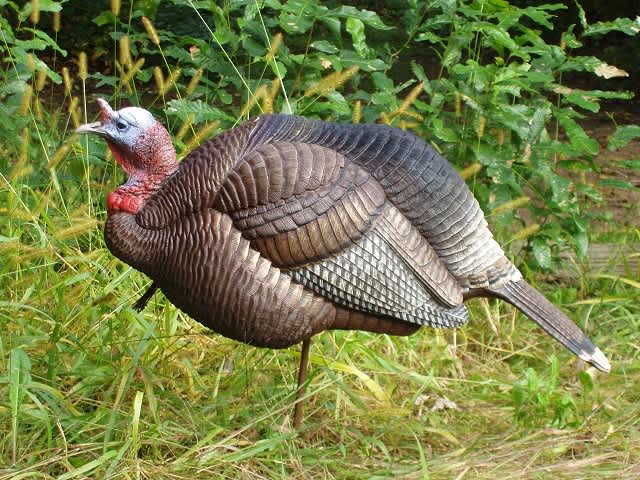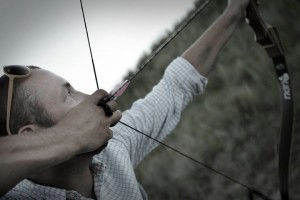Bowling for Spring Gobblers: Strange Turkey Decoy Tactics
Brooks Johnson 01.27.12

I’ve seen all kinds of turkey decoy tactics across the country in the past 20 years. Breeding sets, back feather rugs, and walking behind silhouettes. I have tried it all. At least I thought so until I hunted with guide Justin Nott at Laughing Water Ranch Outfitters in north central Nebraska. They take close to 100 turkeys every spring. I’ve seen a lot of weird turkey decoy tactics, and below is a favorite.
Turkey decoy tactics
Justin talked about one of the turkey decoy tactics he uses for gobblers in open meadows and fields. If you’ve hunted turkeys enough there’s a good chance you’ve been in this situation: a big strutter in the middle of a wide open field. Maybe he’s got a few hens with him or he’s just being a stubborn gobbler. You’ve thrown every call in your vest at him. He seems interested, but not coming any closer. The only chance you have to get that bird closer is to get a turkey decoy out in the field, but there’s no cover and no way to crawl out there without being seen. So how do you get the decoy out there? Simple, just throw it. Well, more of a controlled roll like you’re bowling. This may sound like a long shot, but it has actually worked for him many times. The throw is movement, which will always garner a turkey’s attention, and it’s surprising how often the reaction is positive.
Most turkey decoys don’t bowl real well. Justin was fortunate this past fall to field test the Best Turkey Decoy. The way the birds came in and crushed the turkey decoy made it feel like spring. He even had a good tom mount it, which is pretty rare to see in the fall. Not only is the Best Turkey Decoy a detailed and life-like turkey decoy, it almost always lands upright when tossed! Let’s face it, you’re not going to throw a cheap foam decoy too far. A full body strutter such as a Killer B or Pretty boy could work, but they’re too big and awkward to roll. Plus, if you’re using a real fan there’s a good chance you’ll destroy it. In the past, Nott used a specially modified mounted jake named Frankenstein. Unfortunately, Frankenstein was fairly delicate and wasn’t very fond of being tossed around, especially into a wet field. Still, it got quite a few wise old birds killed, but he was spending as much time repairing it as he was hunting.
 Turkey decoy tactics practice
Turkey decoy tactics practice
With a little practice, Justin says you can roll the Best Turkey Decoy out to 30 yards and make it sit upright 8 out of 10 times. Even if the turkey decoy doesn’t sit upright you’re still in the game. A quality turkey decoy laying on its side can give the impression of a wounded bird. Most toms, whether they’re the dominant bird in the area or not, will likely jump at the chance to easily get rid of potential competition. Also, turkeys know by instinct that a wounded bird can attract predators and will try to push it out of the area. He’s actually had birds commit to Frankenstein while he was lying upside down on his back.
Another situation this technique is good for is when you use a hen yelp to locate a bird in thicker timber and he’s already on top of you. The bird is coming and there is no time to think out the best set up. Just toss the turkey decoy in the direction of the bird and find the nearest tree. It might save you the heartache of spooking that fast-closing tom. A locator call such as an owl or crow call helps, but sometimes birds just wont respond, especially during midday.
Bowling turkey decoys is more of a last ditch effort, but it’s definitely something you want to keep at the bottom of your bag of tricks. I know there’s a good chance you’ll see me bowling for turkeys this spring. For more turkey decoy tactics, come see Justin at Laughing Water Ranch. Maybe we can go bowling together.


